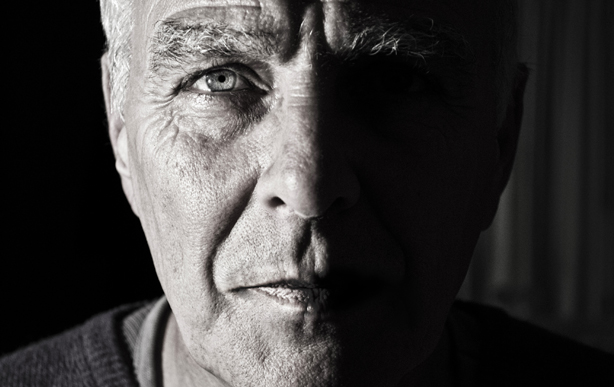Conditions Treated
Major Depression
Depression is a very common condition affecting as many as 20% of people during their lifetime and 10% at any given point in time. More females are diagnosed but this may be a reflection of more males self medicating with drugs and alcohol. Often patients appear as if they have a physical illness. They are not sleeping, feel exhausted, have no appetite, feel anxious, do not enjoy any activity, feel hopeless, pessimistic, and can be suicidal.

To those around them they are nothing like their usual selves and often suffer from difficulty working and with inter personal relationships. At this time, major depression is considered a medical illness which generally responds to medication in addition to behavioral therapy. There are currently over 16 different medications available to treat depression all of which are highly effective at improving symptoms.
Medications alter levels of chemicals called neurotransmitters including serotonin, norepinephrine, and dopamine. In addition certain augmenting drugs can be highly effective in poor responders to standard treatments. Psychotherapy including Cognitive Behavioral Therapy (CBT) is also frequently helpful and is highly recommended in many cases.
The trick is to find the right course of therapy for a given patient. By making a correct assessment, the most effective course of treatment can often be determined so that patients begin to improve quickly. With an expertise in the use of these medications, Dr. Sokolski can discuss with you which treatments are likely to be the most successful, the dosing of these medicines, and possible side effects.
Some patients for example are very concerned about weight gain, sedation, or sexual side effects. Some of the newer antidepressants such as trintellix, viibryd, ketamine and auvelity do not have these side effects. As noted, there are a number of options available in treating depression.
Dr. Sokolski’s policy is to recommend aggressive treatment of depression until virtually no symptoms remain providing patients with the best outcome for functioning and enjoying their lives.
Bipolar Disorder
Bipolar disorder occurs in 2-4% of the population and has an equal gender prevalence. There are two types: Bipolar I disorder in which a manic episode has occurred and alternates with depressive episodes and bipolar II disorder in which the patient has never had a manic episode but has hypomania alternating with depression.

Mania can be diagnosed in patients who have had episodes in which they do not sleep at all, are hyperactive, loud, intrusive, hypersexual, euphoric, irritable, have grandiose delusions, and may hallucinate such as hearing voices or “seeing things.” In contrast in bipolar II disorder, patients may suffer from depression which cycles into hypomania in which they have more energy, are more optimistic, more social, and irritable.
Bipolar I patients require mood stabilizers which can include lithium, anticonvulsants, and atypical antipsychotic medication whereas bipolar II patients often do best on either lithium or the anticonvulsant lamotrigine, possibly with low doses of antidepressants. It is vital to determine an effective therapy and educate the patient and family about the importance of continuing treatment as the major reason for medication failure is non-compliance.
Generalized Anxiety Disorder
Nearly 20% of the population suffers from generalized anxiety disorder at some time of their lives and this may reflect the high levels of stress under which we live. The symptoms include a constant feeling of nervousness, inability to relax, poor sleep, and exhaustion accompanied by multiple physical symptoms such as palpitations, stomach upset, headaches, dizziness, sweating, chest pain, muscle tightness, flushing, and other autonomic symptoms.

Besides behavioral techniques such as exercise, meditation, and reducing stress, short term use of benzodiazepines such as lorazepam or klonopin can be helpful as well as medication for insomnia. The mainstay of medical therapy are the Serotonin Reuptake Inhibitors (SSRI) such as zoloft, lexipro, and celexa or the SNRI antidepressants (effexor, pristiq, or cymbalta).
There are also a number of other strategies which can be tried. Since some patients self-medicate with drugs or alcohol, use of these substances must be treated and eliminated before successful therapy can begin.
Panic Disorder
Panic disorder represents the most severe expression of generalized anxiety disorder. In this condition which occurs in about 3% of an unselected group of people, individuals suffer from extreme bouts of anxiety which are often not precipitated by any particular events.

They will suddenly switch into uncontrolable levels of nervousness in which they have severe palpitations, are certain that they are experiencing a heart attack, feel as if they are going to faint., sweat profusely, have a need to leave the area they are in, experience a sense of doom, and have a feeling of losing control of their faculties.
Emergency Rooms frequently see these patients and usually rule out any medical cause. In general panic disorder patients respond to the same therapies as those with generalized anxiety disorder but the medication doses often have to be increased more slowly and to higher levels. They may benefit from exposure therapy to assist them in tolerating feared situations.
Obsessive Compulsive Disorder
In obsessive compulsive disorder which is diagnosable in about 1-2% of the general population, patients begin developing a set of compulsive behaviors and thoughts from an early age, usually about six years old. Although the action or the thought is senseless to them, they become highly anxious if they do not carry it out.

As a result they spend much of their time doing senseless acts and fearing the results of omitting an act or not obeying a thought. Treatment generally consists of an intensive exposure therapy program and medication with high doses of SSRI antidepressants. We are fortunate in having an excellent OCD behavioral program nearby (The Gateway Institute and OCD Center of L.A.).
High doses of SSRI antidepressants boost serotonin levels which are thought to be highly deficient in this condition. The combination of exposure therapy and medication often results in improvement over several months so that patients can usually resume their previous functioning successfully.
Post Traumatic Disorder
As many as one in four people have experienced a traumatic event severe enough to result in nightmares, flashbacks, and intrusive thoughts which cause difficulties in functioning and enjoying life. These traumas may include war related experiences, physical attacks, and sexual assaults.

While the mainstay of treatment for Post Traumatic Stress Disorder (PTSD) is psychotherapy with a trained therapist, medication can be extremely helpful in improving the anxiety and depression which accompanies this condition. In general SSRI or SNRI antidepressants are used with other medications for insomnia and anxiety as needed.
Most patients experience optimal relief of their condition with a combination of medical and psychological therapies. Treatment may need to be ongoing for several years, Patients with early sexual trauma and borderline features often require extensive therapy up to several times a week with a very experienced therapist.
Recently the medication Prazosin has proven highly effective for the treatment of nightmares.
Pre-Menstrual Dysphoric Disorder
Up to 30% of women experience a significant increase in irritability, anxiety, tension, and depression during the week before their menstrual period which completely resolves post-menses Among these patients perhaps one-third describe the symptoms as unbearable or significantly affecting their functioning and wellbeing.

These patients often respond to low doses of SSRI antidepressants such as citalopram given throughout the menstrual cycle or sometimes only from days 20-28. The basis for the symptoms is thought to be the fall in serotonin which occurs in conjunction with the drop in estrogens following ovulation on day 15.
Post Partum Depression
A significant proportion of women giving birth experience depression due to the large drop in estrogens and other hormones post-partum which drastically reduces the levels of neurotransmitters such as serotonin. Some of these depressions can be severe and women can become suicidal with no interest in their infant, family, or taking care of themselves. A small number of post partum patients may develop a psychosis which may require intensive treatment with anti-physcotic medication.

While I am very conservative in terms of not using psychotropic medications during pregnancy unless absolutely necessary, once pregnancy has terminated, the mother may require aggressive medical treatment of depression. Some of these patients were taking antidepressants before conception and are simply restarted on this treatment. In others, new medications are initiated. Although the risk to infants is small in some cases a decision is made to limit breast feeding when the mother is taking an antidepressant as the medication becomes incorporated in the breast milk.
More awareness of the effects of pregnancy on the mother's behavioral condition is needed as post partum depression is among the most common under recognized and under treated psychiatric conditions.
Attention Deficit Disorder (ADD/ADHD)
Attention deficit disorder (ADD) and Attention Deficit Hyperactivity Disorder(ADHD) are among the most common psychiatric conditions in childhood and adulthood. They are now thought to affect up to 10% of males and females with no gender bias. Girls tend to present with mostly inattentiveness and mood disorders owing to their more rapid brain development while boys are often hyperactive as the motor strip develops more slowly in males and is more often affected by the condition.

In both males and females there appears to be a deficit of the chemical dopamine in the frontal part of the brain. This may be due to inheriting an overactive dopamine transporter which is a protein that exports dopamine away from the active part of the Central Nervous System. Family histories almost always identify a first degree relative who also has ADD. As a result of low dopamine, the frontal area of the brain cannot function in its normal role of paying attention, concentrating, organizing, planning, and controlling impulsivity. In addition, many patients, especially females with Atttention Deficit Disorder are also affected by anxiety and depression.
For this reason girls are often diagnosed with depression or anxiety before it is determined that they have ADD (often in their 20’s or 30’s). The treatment is almost uniformly medical and involves giving a medication which inhibits the dopamine transporter so it isn’t expelling dopamine so rapidly. Unfortunately owing to the fact that individuals without ADD have normal amounts of dopamine and become “stimulated” by such treatments, these medications have been mis-named “stimulants.”
These include the familiar medications: ritalin, adderall, and dextroamphetamine and some less familiar newer medications which are longer acting including vyvanse, concerta, evekeo, dynavel, jornay, and astarys. Instead of stimulating ADD patients, these medications generally result in improved calmness, mood, and concentration. There is also the non-stimulant, strattera which works through increasing levels of norepinephrine and may be appropriate for some patients. Several large studies in children and adults have indicated that these medications are quite safe for long term use and even help to reverse brain atrophy in the frontal lobe which occurs in this condition.
Among my patients there have been some remarkable successes such as going from failing grades to straight A’s or obtaining high level employment when working was not previously possible.
Sleep Disorders
As many as half of older adults and a majority of patients with mood or anxiety disorders cannot fall or stay asleep. Getting a good nights sleep is critical to overcoming any psychiatric disorder and maintaining good health. For this reason, every effort is made through this office to improve patients sleep.

Some resolve insomnia through the use of medications prescribed for their primary disorder. For others an array of therapies are available including low doses of certain antidepressants, antagonists of the wakefulness neurochemical orexin, non-habit forming sedative hypnotics, and fractional doses of atypical antipsychotics which are often helpful to allow patients to fall or stay asleep. Before these are tried, patients are typically instructed to test the effects of melotonin or over the counter benadryl to see if these will help.
Sleep hygiene practices are reviewed with all patients including not exercising or eating just before bed and particularly not drinking caffeinated beverages after noon. Patients suspected of having sleep apnea are referred for sleep studies. Altering the timing of medications given for the primary condition can also frequently improve insomnia.
Eating Disorders/Weight Control
Eating disorders are more common in female patients while the need for weight control is present in both genders. Binge eating disorder has been recently recognized as a common problem in which individuals eat large amounts of food at one sitting often resulting in extensive weight gain. Anorexia nervosa is associated with extensive weight loss and an obsessive belief that one is overweight despite frequently decreasing weight below 80% of normal levels.

Treatment of anorexia has generally included behavioral therapy coupled with SSRI antidepressants to address the obsessive thinking. Binge eating and bulimia have also benefitted from SSRI’s however recently stimulants such as vyvanse and weight control treatments including topiramate have been effective. Medicines for type-2 diabetes such as ozempic have recently been used for weight loss but as yet do not have a FDA approval.
Many patients simply want to lose weight, particularly since some of the treatments for mood and anxiety disorders can result in some weight gain. In addition to portion and calorie control as well as regular exercise, some medications have exhibited effectiveness for weight reduction.
Treatments which may block pathways leading to hunger centers in the brain include topiramate, phentermine, bupropion, and naltrexone given alone or in combination. When successful, these therapies may result in a 10-15 pound weight reduction and can be safely managed along with other psychotropic medications.
Schizophrenia
While only a small number of patients with schizophrenia receive medical treatments through our office, Dr. Sokolski has extensive experience managing these patients through his years of inpatient hospital work and research in clinical trials.

Schizophrenia affects 1% of the world’s population but another 1% of patients have schizoaffective disorder in which mood symptoms and psychosis (delusions and hallucinations) co-occur. There are currently a number of medications available to treat these illnesses including several new therapies with improved side effect profiles.
Newer medications such as latuda, vraylar and caplyta for example do not cause weight gain or metabolic abnormalities such as increased cholesterol or serum glucose. Clinical trials involving treatments affecting the glutamate system may provide new avenues for treating this disease. Due to a high degree of medication non-compliance, there has been an increase in the use of depot anti-physcotics in which an injection is only required once every one to two months.
Memory Disorders
Alzheimer’s disease and vascular dementia are among the most rapidly increasing conditions diagnosed in medicine, neurology, and psychiatry. Since these disorders increase with age, it is not a surprise that in a aging population, memory disorders have become an increasing cause of dysfunction and concern. The care of these patients has skyrocketed into the billions of dollars and their emotional cost is immeasurable.

In terms of medical therapy there are currently two avenues of treatment: Acetylcholinesterase Inhibitors to increase the neurotransmitter acetylcholine and the partial NMDA antagonist memantine which tends to block neuronal damage secondary to calcium influx through NMDA receptors. Both medications are relatively well tolerated and in Europe are routinely given together as the best available treatment to halt memory decline and possibly reverse some of the memory loss. Some studies indicate when therapy is given early in the illness, low dose lithium or anti-bodies to plaque may slow or halt the progression of the illness.
Because no available therapy significantly restores memory function, however, it is best for patients to be diagnosed and treated early to prevent further cognitive decline. For this reason it is our policy to send patients for neurocognitive testing as soon as complaints arise and to discuss treatment at symptom onset. As noted the Ach-ase inhibitor aricept and NMDA partial antagonist, memantine are often combined as is done in Europe and frequently result in a halt in memory loss which is sometimes accompanied by some measurable improvements in memory after several months of treatment. A new medication is now available in the US which combines these medication in one treatment.
Current research is aimed at developing medical therapies to halt the processes involved in cognitive decline. Specifically it is hoped to prevent the abnormal development of tau proteins and plaque formation. These treatments may be available in the next several years.